#foreflight
Text


study night ✈️
#the mess around my desk#learning foreflight#this app is insane#more of a program tbh#flying again Thursday#fall vibes#preppy#dark aesthetic#dark academia#coffee#aesthetic#flight student but make it 🐍#dark academic aesthetic#foreflight#bookstagram#bookstack#books & libraries#study blog#studyblr#study aesthetic#study movitation#flying#aviation#my photos
242 notes
·
View notes
Text
the hilarious world of Tirooon Jokes, where controllers take silliness and fun to a whole new level! Picture this: when the operator asks a pilot and say "TIRON?" and like clockwork, at least two other people respond in the background like a PARROT BIRD with an enthusiastic "TIROOOOON!!" It doesn't stop there, though.aviation humor It's an ongoing cycle of banter and playful teasing that never fails to bring smiles to our faces.🤣😂😆 Must watch: https://www.youtube.com/playlist?list=PL2Ht100hWtXTx2YhGYVFHejldUeNIcJ2l https://www.youtube.com/playlist?list=PL2Ht100hWtXSFB-KhJwrBI67JMmWDnBM-
#the hilarious world of Tirooon Jokes#Tirooon Jokes#faa#prepar3d#vasaviation#vidiq keyword research#Control Tower mocks#vatsim#boeing#ivao#tracon 2019 amv#tracon vlog#tracon 2022#fairy kei#foreflight#tracon#federal aviation administration#john wayne airport#atc#flightaware#flight tracking tutorial#flightradar24 ads-b receiver#flightradar24#aviation humor#daily dose of aviation#atc comedy#roger victor#funny#aviation fails compilation#funny aviation
0 notes
Text

0 notes
Text
coworker flew to kansas today and found this

i want to believe
#the truth is out there#og#PS they added it as a waypoint in foreflight so now anyone can fly to Penis#go to Penis with me brother
18 notes
·
View notes
Text

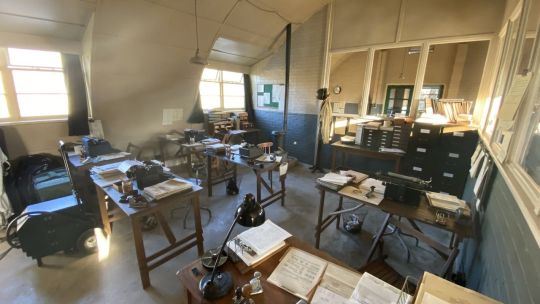
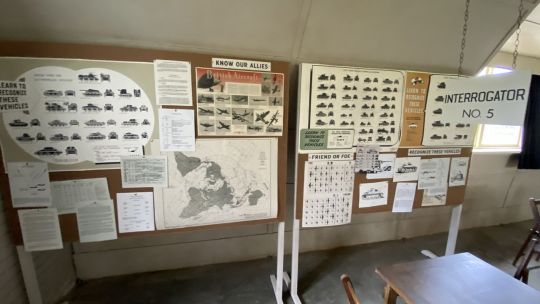
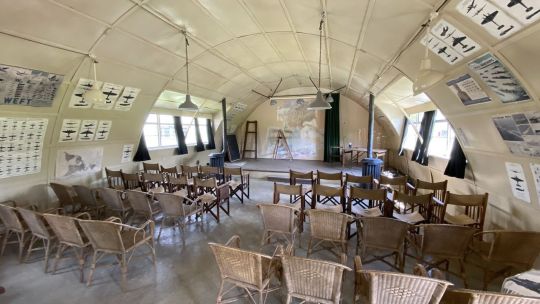
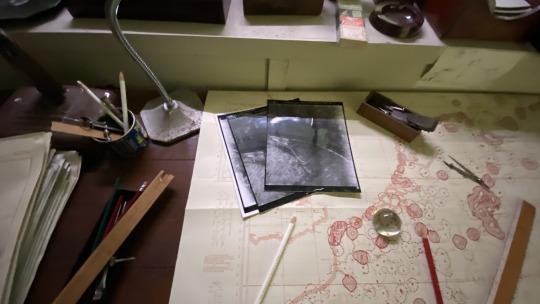
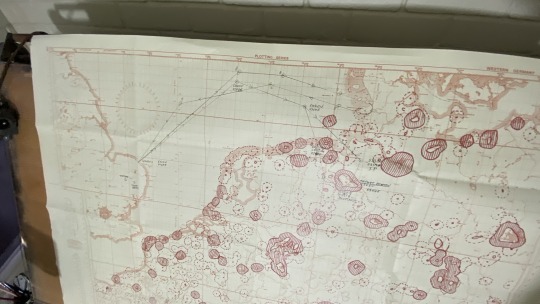





"Masters of the Air details: Part 1-Graphics
"[...]I had the pleasure of working with the graphics department on many topics from navigation to mission planning, forms, manuals, research and just plain answering questions.
"Dan Burke was the department head but I mostly worked with Megan Jones and her wonderful pup Indy.
"When on set, like in one of the offices that you have seen in the first two episodes or anywhere else in the series, you will see bulletin boards, clip boards, file folders and in/out trays and typewriters filled with paperwork. If you were able to pick up one of these documents you will find actual 100th BG documents faithfully recreated and they are also pertinent to the specific time of the scene. And I am not just talking a page on top but all the way through the stack!
"The mission orders came in to the bomb groups via teletype machines and were printed out on special sized roll paper. Meg found a guy who had working WWII teletypes and then she found the exact paper. She printed up the correct mission reports and they were coming out of the machines and looked great!
"One of the things that Meg asked me about was the navigation paperwork. Crosby had several scenes where he was navigating and just what kind of paperwork would he have had?
"Charts, maps and navigators logs was the answer to begin with and I had brought examples of those with me to teach the actors how to look like they could navigate. I even had some of my Dad's paperwork and nav kit along. Meg recreated his bare nav log to use with Crosby's scenes.
"We then looked in to the mission routes so we could fill out the nav logs and mark the charts and big briefing wall map accurately. I dove in to the archives mission files that they had procured from sources in the US but since this was deep in the middle of COVID the archives were closed down and getting additional research information was problematic. The National Archives in the UK opened up and I was there on the weekend doing research. Instead of the multi generation degraded copies that production received from the US these files were all original and in perfect condition. Incredible stuff for sure with all of the photos complete with Air Ministry water marks on the back of the paper.
"In the mission files were the planned route of the mission and also the actual route flown which were often quite different. I dug in to the files and was able to plot out the planned and actual mission routes on charts that Meg had reproduced. For the pilot types reading this I also plotted all of the routes on ForeFlight to help with quick calculations for the headings as we actually put in the winds that were encountered and reported in the mission file. Meg ended up getting Foreflight so we could share the plots and work out the future missions.
"One of the things that I hadn't realized but was revealed in the reports was just how much time was spent in forming up the whole attacking armada. Each bomb group would all take off and form up over their own air field. Then they would go to specific assembly areas and form up the wings and full task force. It took two, three or more hours of flying just to do this over the UK before they headed toward fortress Europe. Amazing really and it explains why so many aircrew died during this from collisions climbing through the ugly weather. Hundreds and then thousands of aircraft all coming up through the heavy cloud layer on instruments trying not to hit each other. A lot of them did and a near miss sequence is depicted in the series.
"So when you see the paperwork, posters, maps, teletypes and amazing other details you can appreciate the efforts of Megan and the graphics department. And all of the other departments, Some of which I will try to highlight in future posts if this is of interest." - (Taigh Ramey on Facebook)
#this is like a treasure trove. to me!#masters of the air#hbo war#behind the scenes#long post#i haven't posted something this long in. a while (at least nothing so Wordy!)
62 notes
·
View notes
Text
It's funny bc the FAA is so against any type of neurodivergence in pilots (if you dont know it's EXTREMELY difficult to get a flight medical certificate if you've been diagnosed with... anything, any kind of neurodivergence really. It's insanely restrictive and a hot button topic in aviation) but every pilot I've ever met have been like. Extremely on the spectrum [positive]
Like there's So Much to being a pilot. You HAVE to be autistic as fuck to do it. Not only do you have to understand the basics of how to control the airplane, you also have to understand aerodynamics, physics, meteorology, engine mechanics, how all the instruments work, tons of math, how radio signals work, navigation, and a bunch of other shit I've probably forgot. My current study unit is about the Earth's magnetic field and how it affects the magnetic compass in the airplane. This is a whole deep dive of a chapter. And it's important and not some kind of tangent. You have to know this just to make turns with any accuracy 😵💫 You have to be processing all of this all at once while flying and also just physically fly the airplane at the same time.
So all this to say it's real funny the FAA says ohhh no you can't be autistic and be a pilot. Bc like my instructor is the most autistic adult I've ever met in my LIFE and I relate him so much lmao. I told him I finally got gifted an iPad (for navigation, foreflight is Apple only) by my lovely partner and he went on a 20 minute hyperfixated explanation of lesser known features of foreflight. When we were supposed to be doing our preflight lmao. He'll text me that we should fly soon and that he misses seeing me and I'll text him right back asking if we can schedule next week and he clearly got distracted and doesn't answer for three days lmao. He's one of my favorite people and I get him so much lmaoooo but man if the FAA got rid of all undiagnosed pilots they'd have none left lel
Anyway I'm still waiting for him to text me back kdkdkdkf
15 notes
·
View notes
Note
Hello!💖 Can you please make a quirk marriage between Fierce wings and Foresight?
I know some of my Quirks can eek into the horror category, but I don't think I've done nearly enough angelic horrors.
New Quirk Name: Divine Wing, Ornithomance, or Foreflight
This Transformation type Quirk allows the user to grow a set of wings with white feathers. The user can remove and control these feathers, which are capable of sending them out and receiving information from them over medium ranges, and are strong enough to be used as weapons. From these feathers, the user may open a series of light blue, crystalline eyes. These eyes perceive and transfer information much faster to the user, effectively letting the user see the future through advanced prediction. The user can handle this influx of information and can still react to it, like seeing someone about to shoot them and dodging it or moving a feather to intercept it. The more eyes that are open, the more the user can predict the future and react to it, letting them act and react to several instances at once. This gives the user a versatile power, capable of effortlessly maneuvering impossible situations with their senses. They can react to attacks before they happen, scan over large areas with their feathers, have them fly around allies to protect them, glide around on their wings, or just freak foes out with giant eyes. Though opening more eyes can overwhelm the user with information, making it difficult to react, keeping them open for too long will cause the feathers to lose energy when they are not in contact with the user. The feathers can still be destroyed and will take a few days to grow back.
#My Hero Academia#Quirks#Quirk Marriage#Keigo Takami#Hawks#Fierce Wings#Mirai Sasaki#Sir Nighteye#Foresight
47 notes
·
View notes
Text
Voyager
Tomorrow is the day that Apple Vision Pro becomes available, and today, Apple announced over 600 new apps built for it. As Apple typically does, they seeded certain companies with advance units, allowing them to develop and test on the device. Our design organization has a partnership with Apple, so we were one of those privileged companies. If you scroll down through the linked article, you'll see a short video clip of an app called Voyager by ForeFlight. ForeFlight is a Boeing subsidiary and the leading electronic flight bag provider for pilots in general, business, and military aviation.
No, I didn't get to work on the app, but one of my colleagues did. There were strict restrictions on who had access to the device, so I never got to see it. The app is a really interesting use of the technology—cool enough to be one of a handful featured by Apple.
Apps like Voyager by ForeFlight give spatial context to the coordinated nature of air traffic control, creating the ultimate playground for aviation enthusiasts…
The app combines satellite imagery, high-resolution terrain, and live traffic data to represent airports and the airspace above them.
Using a live traffic feed, Voyager depicts commercial and business jets, turboprops, piston aircraft, and helicopters flying near the selected airport, all shown at their actual to-scale altitudes with realistic pitch and bank. Users can select any aircraft to view detailed information about its flight plan and aircraft type, as well as live speed, altitude and heading information.
You can read and see more details about the Voyager app on ForeFlight's blog. It reminds me of the holographic tables in the first Avatar film.
It’s going to be a lot of fun seeing what else our teams cook up as we further explore the device.
0 notes
Video
youtube
Airborne 10.19.23: JetWave X SATCOM, Air-Show Pilot Hutchins, Foreflight
0 notes
Text
Military Aircraft Avionics Market Sales to Expand at 4.5% CAGR Through 2030
The latest market report published by Credence Research, Inc. “Global Military Aircraft Avionics Market: Growth, Future Prospects, and Competitive Analysis, 2022 – 2030. Avionics have become integral to military airborne platforms since they aid in performing mission-critical operations, including search and rescue, air defense, and strategic transport, among others. The global military aircraft avionics market is set to witness steady growth, expanding at a CAGR of 4.5% during the forecast period from 2018 to 2026.
Military Aircraft Avionics Market is a pivotal segment of the defense industry, focusing on the development and integration of advanced electronic systems into military aircraft. These avionics systems encompass a wide range of technologies, including navigation, communication, surveillance, radar, sensors, and flight control systems. They play a vital role in enhancing the operational capabilities, situational awareness, and mission success of military aircraft, spanning fighter jets, transport planes, helicopters, and unmanned aerial vehicles (UAVs). Key functionalities provided by military aircraft avionics include precision targeting, electronic warfare, aircraft health monitoring, and data connectivity for command and control.
Military Aircraft Avionics Market Major Challenges encompass a range of complex issues that pose significant obstacles to the successful development and implementation of avionic systems for military aircraft. One such challenge lies in the constant need to upgrade and modernize avionics technologies, as defense organizations strive to stay ahead in an ever-evolving battlefield environment. The rapid pace of technological advancements often leads to obsolescence, rendering existing systems outdated before they can be fully utilized. Additionally, interoperability emerges as another hurdle since different military aircraft platforms demand unique avionic solutions tailored to their specific requirements. This necessitates extensive integration efforts across various airframes, resulting in compatibility challenges that must be overcome for seamless operation within mixed fleets.
As the global security landscape evolves, military forces continually seek to upgrade and modernize their aircraft avionics to maintain a competitive edge. The market is characterized by ongoing innovation, with a focus on miniaturization, enhanced performance, and cybersecurity to meet the rigorous demands of modern warfare. Additionally, the integration of artificial intelligence (AI) and data analytics is driving advancements in predictive maintenance and mission planning. In essence, the Military Aircraft Avionics Market is integral to the defense capabilities of nations and plays a critical role in ensuring the effectiveness and safety of military aircraft in a rapidly changing security environment.
Browse 245 pages report Military Aircraft Avionics Market Growth, Future Prospects & Competitive Analysis, 2018 – 2026 https://www.credenceresearch.com/report/military-aircraft-avionics-market
List of the prominent players in the Military Aircraft Avionics Market:
ALTO Aviation
Appareo Systems
Aspen Avionics, Inc.
Avidyne Corporation
BAE Systems plc
Cobham plc
Curtiss-Wright Corporation
Elbit Systems Ltd.
ENSCO, Inc.
ForeFlight
Garmin Ltd.
GE Aviation
Genesys Aerosystems
The regional analysis of the Military Aircraft Avionics Market reveals variations in demand, growth, and technological developments across different parts of the world.
Here's an overview of how different regions contribute to this market:
North America: North America, led by the United States, is a major hub for the Military Aircraft Avionics Market. The region boasts a large fleet of military aircraft and invests heavily in avionics upgrades and modernization. The presence of key avionics manufacturers and defense contractors, as well as a substantial defense budget, drives innovation and development in this sector.
Europe: European countries, including France, the United Kingdom, Germany, and others, have a strong military aviation presence. European defense forces invest in avionics technology to enhance the capabilities of their aircraft fleets. Collaborative efforts within the European Union often lead to joint avionics development projects.
Asia-Pacific: The Asia-Pacific region, particularly China, India, Japan, and South Korea, is witnessing significant growth in military aviation. The increasing defense budgets and the acquisition of advanced fighter jets drive demand for cutting-edge avionics systems. Moreover, local manufacturers in countries like China are expanding their avionics capabilities.
Middle East and Africa: Regional conflicts and security concerns have fueled the demand for military aircraft avionics in the Middle East. Countries like Saudi Arabia, the UAE, and Israel invest in modern avionics to maintain military superiority. The aerospace industry in Israel, in particular, is known for its innovation in avionics technology.
Latin America: Latin American nations with air forces prioritize avionics upgrades to improve their operational capabilities. Brazil and Chile, for example, have undertaken avionics modernization programs for their military aircraft.
Emerging Markets: Emerging markets in Southeast Asia, South America, and Africa are increasingly investing in military aviation and avionics technology. These regions represent potential growth areas for avionics manufacturers as they seek to modernize their military capabilities.
Global Collaboration: International collaboration and joint ventures between countries and defense companies are common in the development of military aircraft avionics. These collaborations contribute to technology sharing and market expansion.
Export Opportunities: Avionics manufacturers in developed regions often explore export opportunities to supply avionics systems to countries with growing military aviation requirements, further globalizing the market.
Government Policies: Government policies and regulations regarding defense procurement, technology transfer, and foreign military sales significantly impact the regional distribution of military aircraft avionics.
Regional Conflicts: Ongoing regional conflicts and security threats drive immediate demand for advanced avionics systems, leading to fluctuations in regional market growth.
Why to Buy This Report-
The report provides a qualitative as well as quantitative analysis of the global Military Aircraft Avionics Market by segments, current trends, drivers, restraints, opportunities, challenges, and market dynamics with the historical period from 2016-2020, the base year- 2021, and the projection period 2022-2028.
The report includes information on the competitive landscape, such as how the market's top competitors operate at the global, regional, and country levels.
Major nations in each region with their import/export statistics
The global Military Aircraft Avionics Market report also includes the analysis of the market at a global, regional, and country-level along with key market trends, major player analysis, market growth strategies, and key application areas.
Browse Full Report: https://www.credenceresearch.com/report/military-aircraft-avionics-market
Visit: https://www.credenceresearch.com/
Related Report: https://www.credenceresearch.com/report/active-protection-system-market
Related Report: https://www.credenceresearch.com/report/aerostat-systems-market
Browse Our Blog: https://www.linkedin.com/pulse/military-aircraft-avionics-market-size-growth-analysis-singh
About Us -
Credence Research is a viable intelligence and market research platform that provides quantitative B2B research to more than 10,000 clients worldwide and is built on the Give principle. The company is a market research and consulting firm serving governments, non-legislative associations, non-profit organizations, and various organizations worldwide. We help our clients improve their execution in a lasting way and understand their most imperative objectives. For nearly a century, we’ve built a company well-prepared for this task.
Contact Us:
Office No 3 Second Floor, Abhilasha Bhawan, Pinto Park, Gwalior [M.P] 474005 India
0 notes
Text
Helicopter Meteorological Software Market Size, Share
The global Helicopter Meteorological Software market is expected to gain momentum from the constant developments in the aviation sector. These Software solutions are being demanded immensely because of their increasing usage in a large number of applications, such as oil & gas, search & rescue, and emergency medical services (EMS). This information is given by Fortune Business Insights™ in a newly published study, titled, “Helicopter Meteorological Software Market Size, Share & COVID-19 Impact Analysis, By Platform (Helicopter and Heliports/Helipads), Application (Emergency Medical Services, Corporate Services, Search & Rescue, Oil & Gas, Homeland Security, Transportation, Others), Offering (Electronic Flight Display (EFD) Software, Application Based Software, PC/Desktop Software, Mobile Software), End Use (Private Operator, Fleet Operator) and Regional Forecasts, 2020-2030.” The study further mentions that the market size was USD 86.4 million in 2019 and is projected to reach USD 117.2 million by 2030, exhibiting a CAGR of 4.68% during the forecast period.
The emergence of the COVID-19 pandemic is causing tremendous losses for several companies. They have either halted operations or have reduced workforce to keep up with the ‘new normal.’ Our reports would help you in gaining in-depth insights into the effects of this pandemic on every market. You will be capable of selecting the right strategy to surge sales.
Information Source -
https://www.fortunebusinessinsights.com/helicopter-meteorological-software-market-103528
This Report Answers the Following Questions:
What are the market opportunities & challenges?
What are the growth drivers, dynamics, & hindrances?
What are the current, historical, & estimated sizes of the market?
How would companies increase sales of Helicopter Meteorological Software?
Drivers & Restraints-
Rising Demand for Real-time Data Tracking to Favor Growth
The rising demand for helicopters for several applications, such as transportation, EMS, and others is one of the major Helicopter Meteorological Software market growth drivers. Helicopter operations often require real-time atmospheric data, namely, weather forecast, wind speed, and temperature to prevent accidents. Also, the Federal Aviation Administration (FAA) has started implementing multiple stringent safety norms to avoid helicopter accidents.
Additionally, real-time data tracking helps the pilot in taking decisions efficiently during the entire flight. Hence, the increasing requirement of real-time software solutions would propel the market growth in the near future. However, the COVID-19 pandemic has caused flight suspensions because of complete lockdown measures across the globe.
Segment-
Helicopter Segment to Dominate Backed by Their High Demand for Multiple Applications
Based on platform, the market is segregated into heliports/helipads and helicopter. Out of these, the helicopter segment is dominated in 2019 in terms of the market share. This growth is attributable to their high demand for numerous commercial and military applications. Helicopter Meteorological Software solutions would help in providing vital data for weather forecasting and monitoring.
Regional Analysis-
North America to Lead Stoked by Presence of Several Software Manufacturers
In 2019, North America generated USD 32.6 million in terms of revenue and is expected to lead the market throughout the forthcoming years. This growth is attributable to the presence of a large number of prominent Helicopter Meteorological Software manufacturers, such as Collins Aerospace, DTN, NavBlue Inc., and ForeFlight LLC in this region. Europe, on the other hand, is set to showcase an astonishing growth in the coming years. Germany, the U.K., and France house several helicopter operators, which, in turn, would propel growth in this region.
Competitive Landscape-
Key Players Focus on Acquisition Strategy to Intensify Competition
The market consists of many large, small, and medium enterprises. Most of them are engaging in mergers and acquisitions to combine their technologies, thereby developing state-of-the-art Helicopter Meteorological Software. Below are two of the important industry developments:
February 2020: FreeFlight Systems joined the portfolio of aviation companies of ACR Group. It consists of SKYTRAC systems, latitude technologies, flight data systems, and ARTEX.
January 2017: Metnext SA was acquired by Weathernews Inc. to share each other’s infrastructure and service know-how. It would also allow the companies to blend their expertise & technologies to develop unique services for customers in Europe, Asia, & the other parts of the world.
Fortune Business Insights™ lists out the names of all the Helicopter Meteorological Software providers operating in the global market. They are as follows:
Airmar Technology Corp. (The U.S.)
Campbell Scientific, Inc. (The U.S.)
Collins Aerospace (The U.S.)
Dassault Systemes (France)
DTN (The U.S.)
ForeFlight LLC (The U.S.)
Fugro (The Netherlands)
Honeywell International Inc (The U.S.)
KONGSBERG (Norway)
Lufthansa Systems (Germany)
NavBlue Inc. (Canada)
Observator Group (The Netherlands)
RH Marine (The Netherlands)
Schneider Electric (France)
Vaisala (Finland)
0 notes
Text


I’m on the schedule for 15:00 to fly but I might get rained out. VFR only for me :(
Until then it’s staring at ForeFlight, praying for better weather, and revision time.
#I’m baby no instrument rating#vfr#am revising#revision#rainy aesthetic#rainy day#fall vibes#my desk#my photos#flight school#bookstack#booklr#slytherin aesthetic#dark aesthetic#dark academia#study aesthetic#studyinspo#studyblr#aviation student#aviation#Slytherin aesthetic
59 notes
·
View notes
Text
Maverick ForeFlight Integration
Over the past few months our team has been working on this new feature, and we are super pumped to announce its release.
This update allows the pilot to quickly and precisely load the flight planned pax, fuel and cargo information into the performance calculation.
How do I use this feature?
Once I've released my flight plan in ForeFlight, it becomes available inside the Maverick app.
The "Flights" screen will contain all future flights (and flights that are slightly in the past).

I hit "Load" for the leg that I'm about to fly, and magically, all my passengers are distributed across the stations; my cargo is loaded into the cargo station.
Also, my initial fuel as well as the landing fuel numbers are both taken from the flight plan, populated into the app, which allows me to be super precise with my speed and distance calculations.
Of course, I can make quick last minute modifications to the weights and positions if I wish.
How do I add ForeFlight into my Maverick app?
Very simple. Log into your ForeFlight account, and go to "API Console."
There will be a button that says "Generate API Key." This essentially is a key that allows Maverick to talk to ForeFlight and fetch the flight plan data. Please note that this requires ForeFlight Dispatch add-on.

Here is some additional documentation about API keys from ForeFlight.
Once the key is generated, paste it into the Maverick control panel (www.maverickapp.com/integrations,) and voila! Reload the app, to see your flight plans.
I love using this feature, because it gives me another level of precision, to make sure I transferred all information from the plan into the calculation.
In the next few iterations, we are planning to integrate more flight planning vendors. Which one would you like to see integrated into Maverick?
Check out the latest version at www.maverickapp.com or on the App Store.
1 note
·
View note
Link
[Updated Report] Press Release, August 01, 2023 (Orbis Research) - The Global Electronic Flight Bag
0 notes
Video
youtube
ForeFlight Flight Planning and SF-50 Vision Jet Wireless Connectivity
0 notes
Text
Iphone x plane

#Iphone x plane simulator#
There is no official GameFAQs app, and we do not support nor have any contact with the makers of these unofficial apps. Continued use of these apps may cause your IP to be blocked indefinitely. This triggers our anti-spambot measures, which are designed to stop automated systems from flooding the site with traffic.
Some unofficial phone apps appear to be using GameFAQs as a back-end, but they do not behave like a real web browser does.
Using GameFAQs regularly with these browsers can cause temporary and even permanent IP blocks due to these additional requests.
If you are using Maxthon or Brave as a browser, or have installed the Ghostery add-on, you should know that these programs send extra traffic to our servers for every page on the site that you browse.
The most common causes of this issue are: To fix this, remove all "XAVION OR FLYQ" connections, and also any "Control Pad" connections.Your IP address has been temporarily blocked due to a large number of HTTP requests. A symptom of this is instead of seeing "X-Plane" on MORE > DEVICES (per step 4) you see "ADS-B". The link to ForeFlight Mobile will not work correctly if a "XAVION OR FLYQ" connection is active to that iPad or iPhone. Symptom: Position not showing in ForeFlight Mobile.
#Iphone x plane simulator#
IMPORTANT: Remember to re-enable Location Services for ForeFlight Mobile when the simulator session is complete. Turn Location Services OFF for ForeFlight Mobile, in APPLE SETTINGS > PRIVACY > LOCATION SERVICES. Symptom: Position in ForeFlight Mobile "jumping" or "lagging" behind the position in the simulator. X-Plane will show "1m" in the ACCURACY instrument when X-Plane is connected Once X-Plane is Enabled, accuracy will be reported as "Accuracy (X-Plane) 1m". Go to MORE > DEVICES and tap on the X-Plane box Note: when using X-Plane version 11, the flight simulator connection sometimes appears as "1" or "2" instead of "X-Plane." Open ForeFlight, tap on MORE > DEVICES, and then tap on the X-Plane box. Go to the iPhone/iPad tab and check the box next to "Broadcast to all copies of ForeFlight." IMPORTANT: 127.0.0.1 is NOT your iPad's IP address. Enter the other address. Enter that IP address in the box on the X-Plane Settings screen. Tap the "i" button in ForeFlight > MORE > DEVICES to see your iPad's IP address. Note: If using FlyThisSim and you need AHRS data to display in ForeFlight, choose the "Send GPS data. Enter that IP address in the box on the X-Plane setup screen. Note: If using the "Transmit to a single copy of ForeFlight." option in X-Plane, tap the "i" button in ForeFlight > MORE > DEVICES to see your iPad's IP address. When the Settings window opens, choose Network, then click the "+" next to the iPHONE & IPAD tab and check the box next to "Broadcast to all copies of ForeFlight." Go to the menu bar and click the Settings button In the X-Plane menu bar, click the Settings button in the far right. Note: X-Plane will not show in the MORE > DEVICES view of ForeFlight unless an X-Plane flight has been started. Start X-Plane on your computer and start a flight. To connect ForeFlight to X-Plane, perform the following: You will need X-Plane version 10.11 or newer. ForeFlight is able to be used in connection with X-Plane.

0 notes